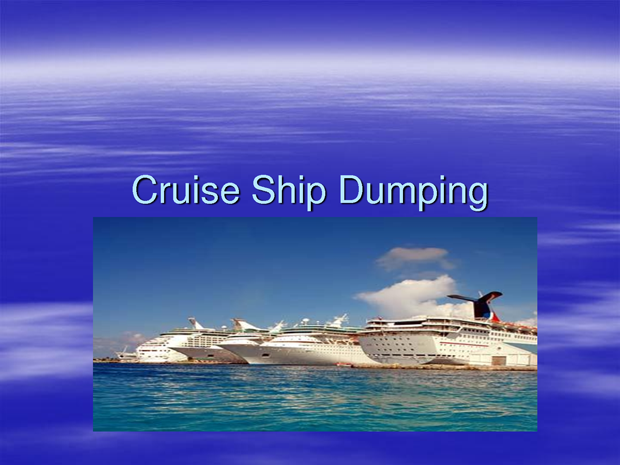[dropcap]I[/dropcap]t’s Tuesday morning in Key West harbor. Pascal Davis raises a small orange flag on the stern of her boat. This will signal to the pumpout boat operator that the sewage holding tank on the “Mothership” needs to be vacuumed; all part of a new County program designed to provide a pumpout service to liveaboard boaters. The County, you see, is so concerned with water quality that it has signed off on a $1 Million/year contract providing free vessel pumpouts.
The paradox is that less than eight miles away thousands of people, in floating cities, party, bathe, dine, drink, and relieve themselves over an open sewer, dumping millions of gallons of sewage and chemicals directly into the ocean. According to Doctor Jerry Weinstock, a resident of Key Haven who is working on a new book addressing cruise ship pollution, those tides of wastewater carried by ocean currents could very well be flooding our shores, asphyxiating the reef and posing a serious health hazard.
Welcome to this voyage into the underbelly, the digestive system of the cruise ship industry, a mostly unregulated $33 Billion/year industry that basically pays no U.S. taxes and yes, has quite an offensive and inconsiderate tailpipe.
In the late 1990’s, three major cruise lines were indicted by the Department of Justice. Royal Caribbean, Carnival Cruise Lines and Norwegian Cruise Lines (all of which dock in Key West) were accused of regularly discharging thousands of gallons of oily bilge water into the ocean. Investigators found that some boats had even installed secret pipes that allowed crew to bypass filtrations systems. The indictment, at the time, brought a $52 Million settlement.
 But experts monitoring marine life, coral reefs, and recreational waters are becoming convinced that cruise ship wastewater discharge and not just oil pollution needs tougher legislation. The average cruise ship, according to Richard Durbin, a U.S. Senator from Illinois, has increased 90 feet every five years over the past two decades. On July 24th of this year in an attempt to tackle the amazing volume of waste created on board these enormous ships, Durbin introduced a bill called the “Clean Cruise Ship Act of 2013”.
But experts monitoring marine life, coral reefs, and recreational waters are becoming convinced that cruise ship wastewater discharge and not just oil pollution needs tougher legislation. The average cruise ship, according to Richard Durbin, a U.S. Senator from Illinois, has increased 90 feet every five years over the past two decades. On July 24th of this year in an attempt to tackle the amazing volume of waste created on board these enormous ships, Durbin introduced a bill called the “Clean Cruise Ship Act of 2013”.
According to a study conducted by the Alaska Department of Environmental Conservation, a cruise ship during one week’s voyage can generate between 100,000 and 1 million gallons of human sewage, one to two million gallons of graywater, 25,000 gallons of bilge water, and eight tons of solid waste.
In 2001 the state of Florida signed a Memorandum of Understanding with certain cruise associations that agreed not to dump any wastewater within four miles of shore. Since 2010 the entire Florida Keys National Marine Sanctuary has also become a No Discharge Zone prohibiting the discharge of sewer [treated or untreated] in all waters within its boundaries. As a result, cruise ships now need to go about two miles beyond the reef to dump treated human waste. In many cases, aside from being passed through a macerator and mixed with chemicals such as chlorine and formaldehyde, that sewage [also called “blackwater”] consists pretty much of whatever comes out of the ships’ toilets.
On the other hand, the “graywater” [from sinks, showers, dishwashers, food slurry, etc. ] can be dumped inside the sanctuary. According to a 2008 Cruise Ship Discharge Assessment Report published by EPA, cruise ship graywater contains fecal coliform levels exceeding national standards for treated sewage by 10,000 times.
“Now,” says, Dr. Weinstock, “because of the particular configuration of the Keys, the No Discharge Zone offers almost no protection from those tides of sewage.” The flow of water in the Keys doesn’t move parallel to the coast. Because the tide current passes through the Keys, back and forth four times a day between the Gulf of Mexico and the Atlantic, any cloud of sewer or graywater dumped two miles off the reef is liable to be sucked back over the reef and within four to six hours flood the harbors, the beaches, the back country.
But interestingly enough, according to many experts, the greatest environmental impact doesn’t come from oily residue, graywater, or even sewage. The biggest problem, they say, stems from the enormous mass of food that is discharged. An average cruise ship serves between 10,000 and 12,000 meals per day. Food waste is ground up and discharged as food slurry. In an interview by David Rosenfeld of DC Bureau, Walter Nadolny, a former employee of Carnival and Norwegian Cruise lines turned professor at the state university of New York Maritime College, stated, “This massive amount of food starts self-digesting and becomes this extremely acidic mess. Probably worse than raw sewage.” Nadolny describes the food slurry as especially harmful to coral reefs. The 2008 EPA report on cruise ship discharge confirms that the putrefying food waste becomes acidic, lowers oxygen and increases nutrients in the water.
To read complete story click here […]



Join the discussion One Comment